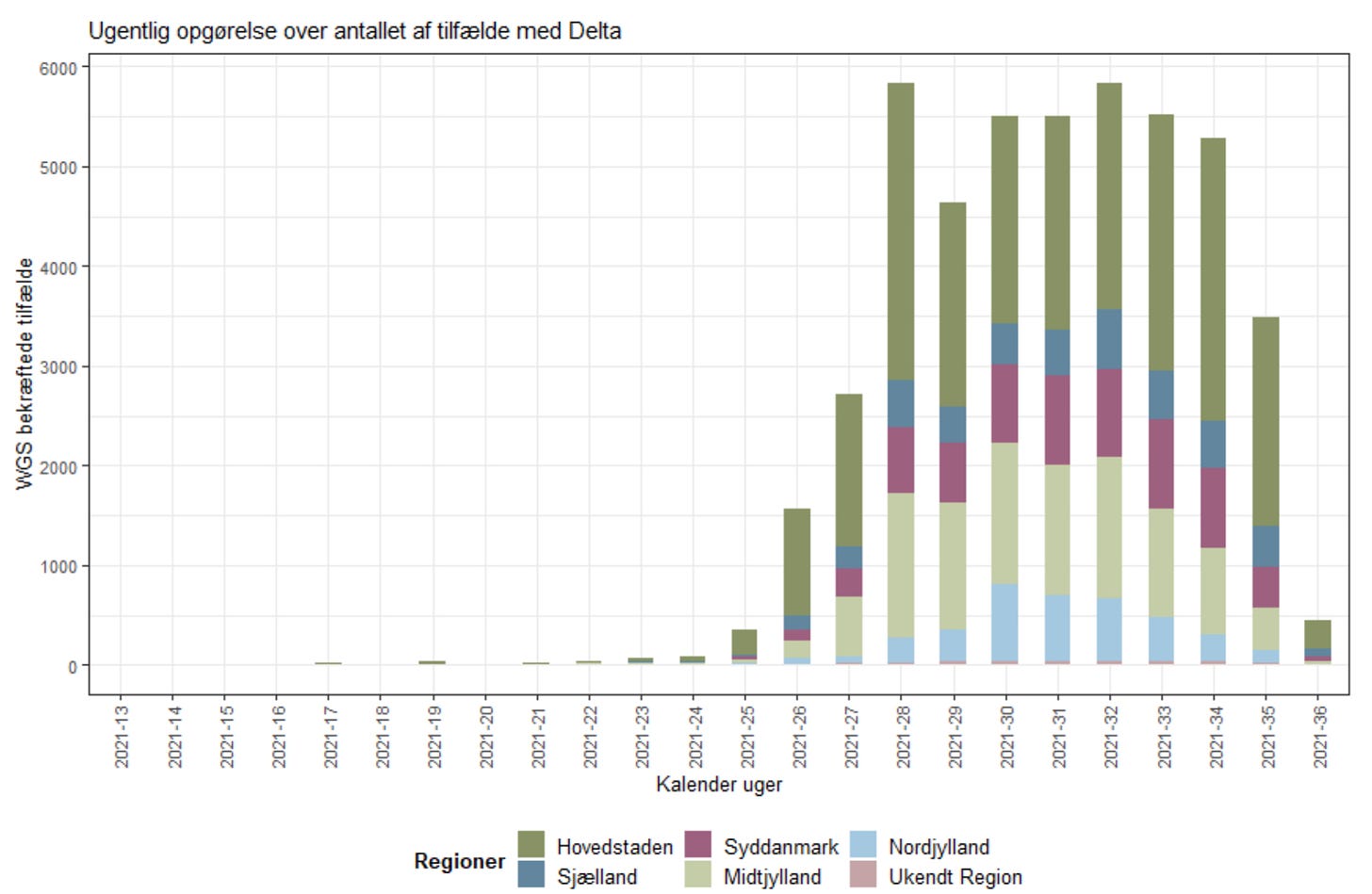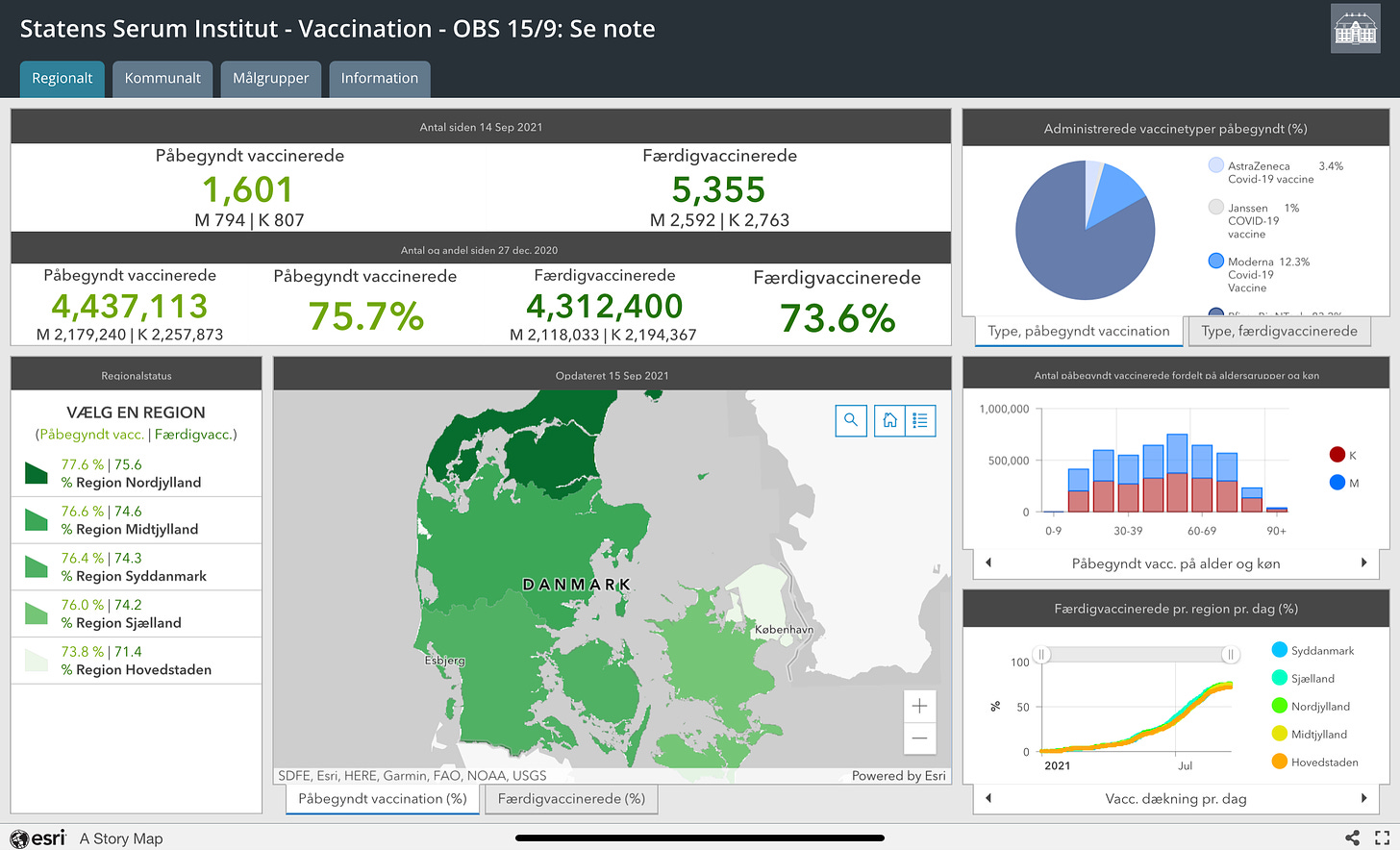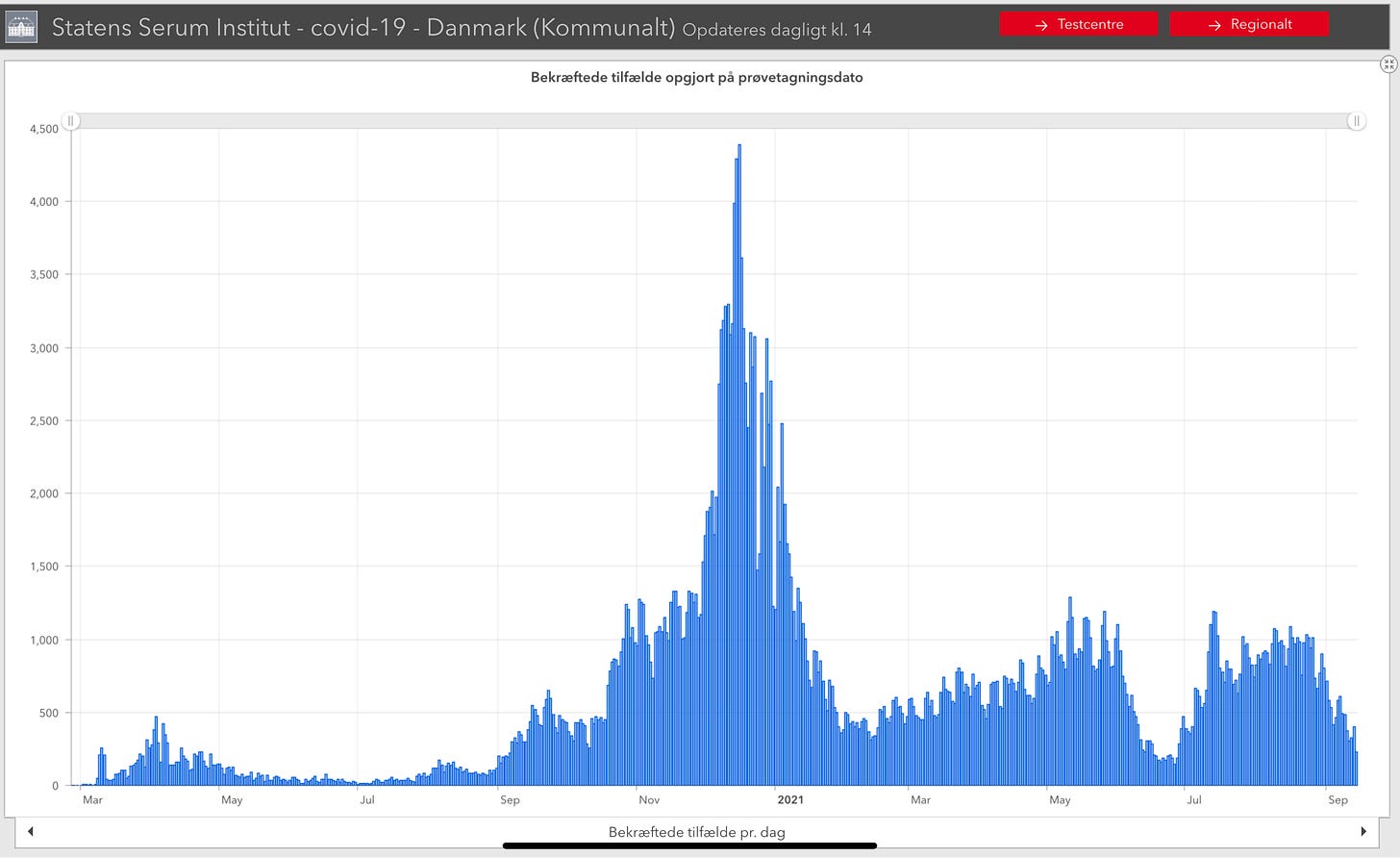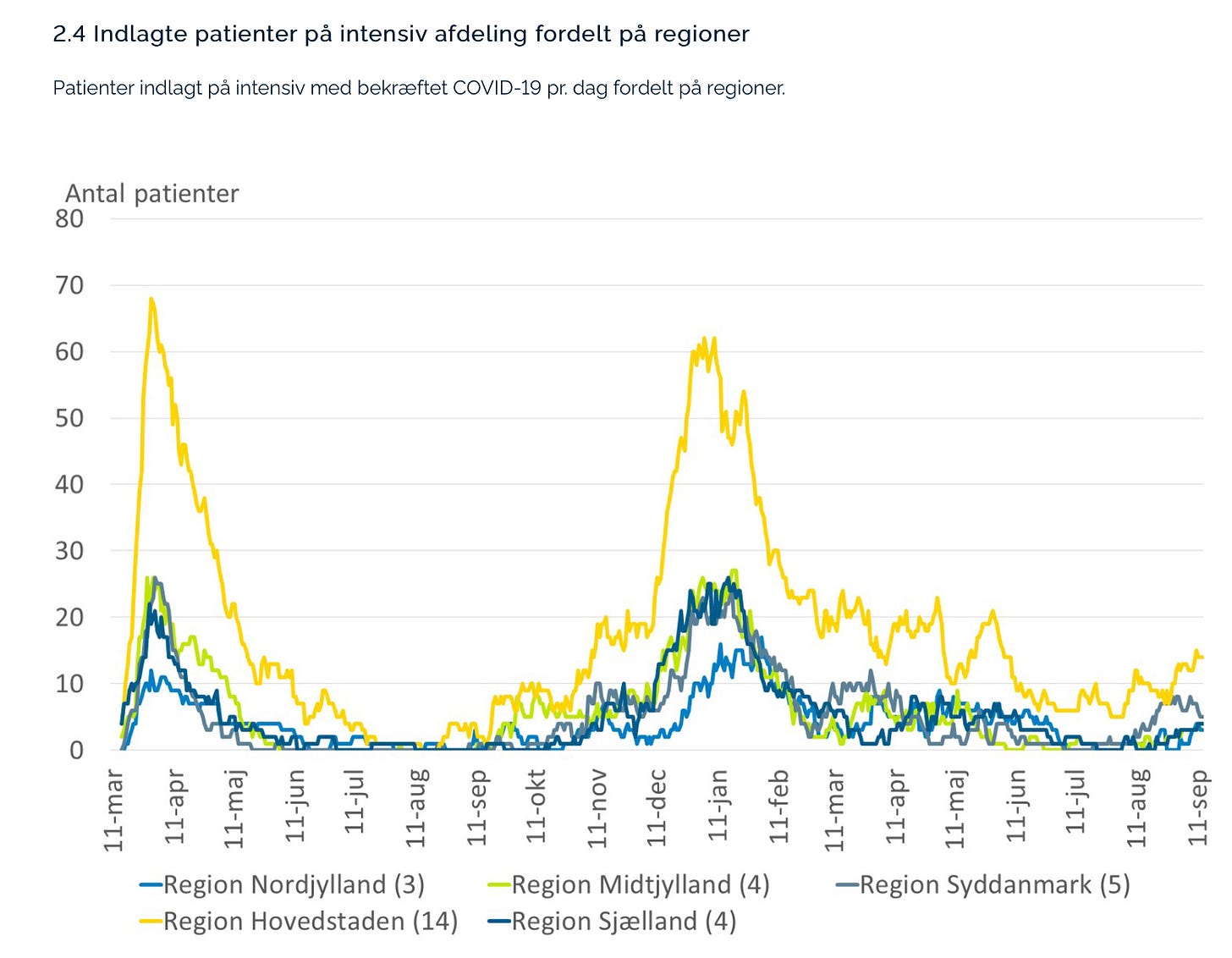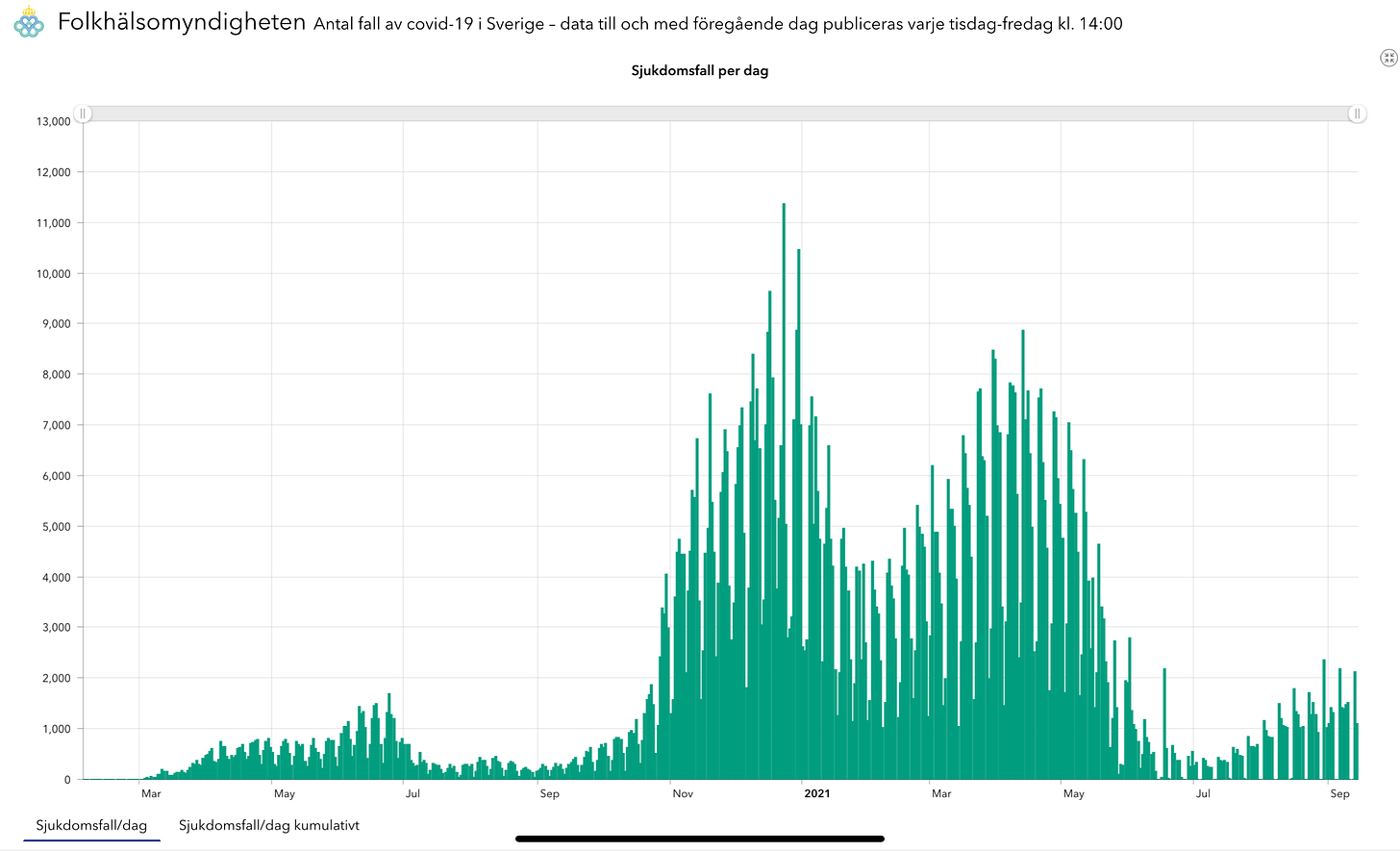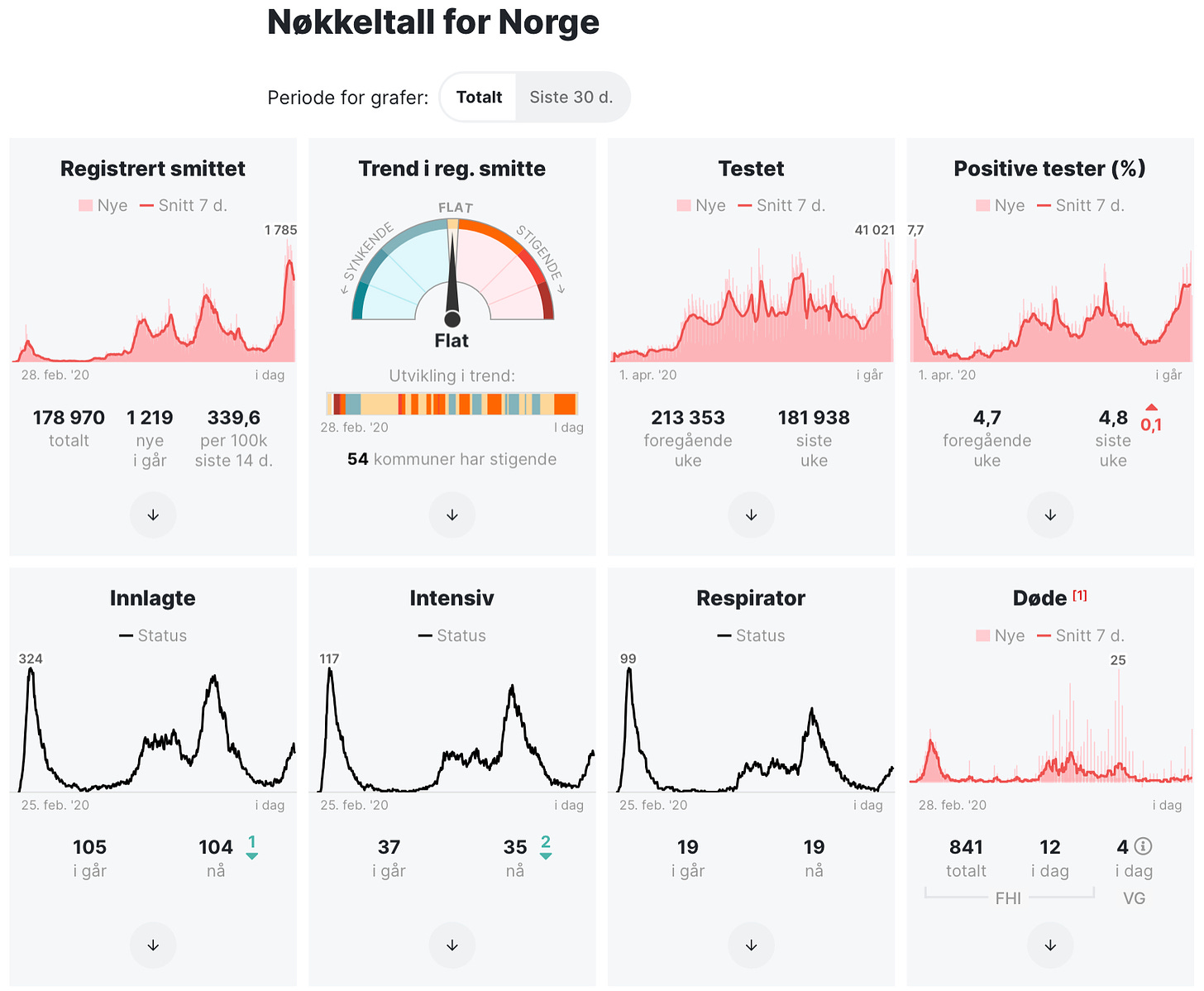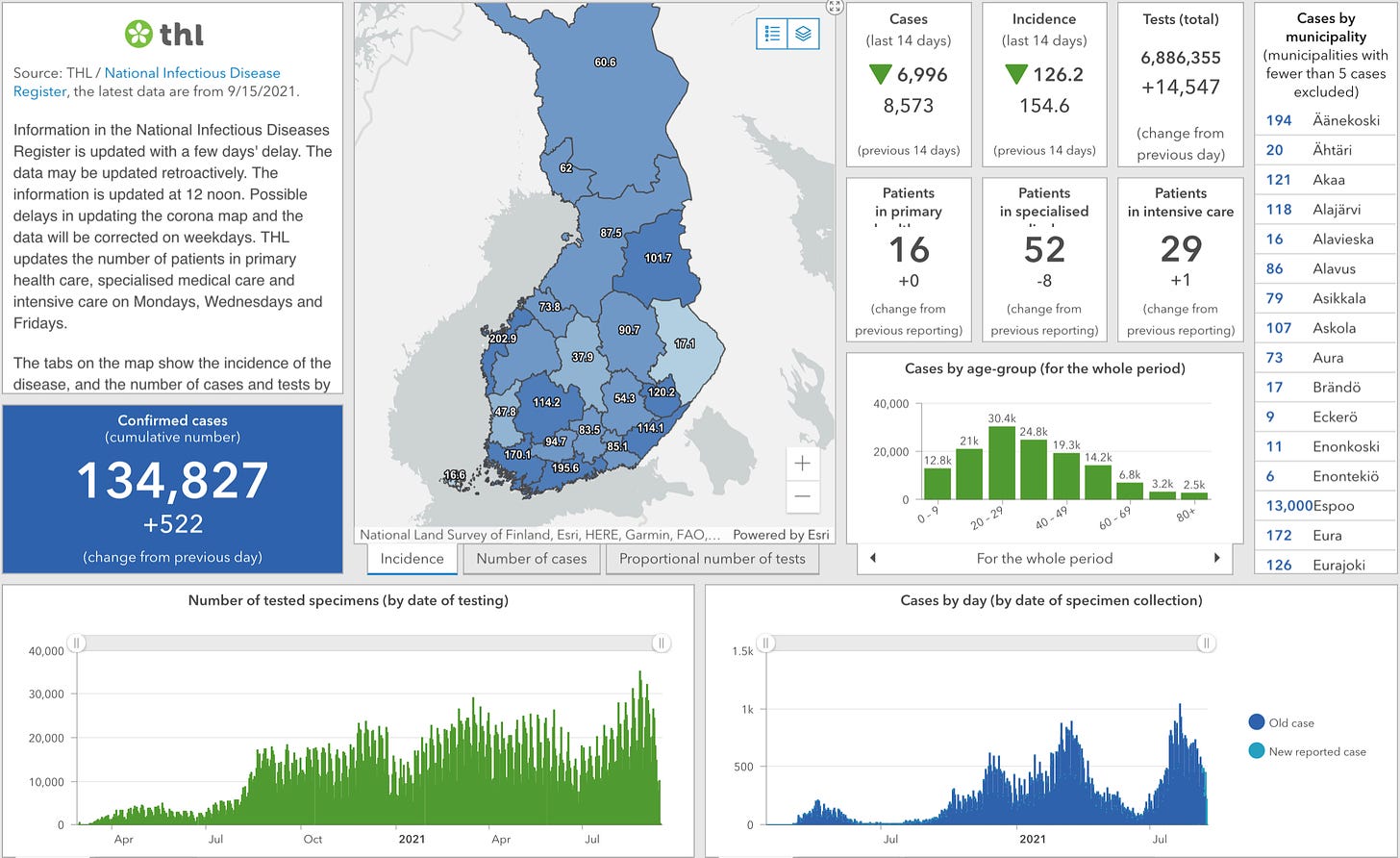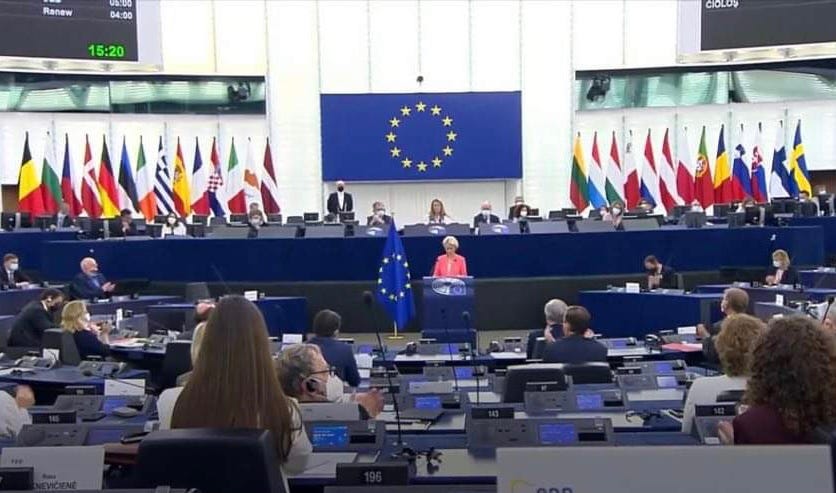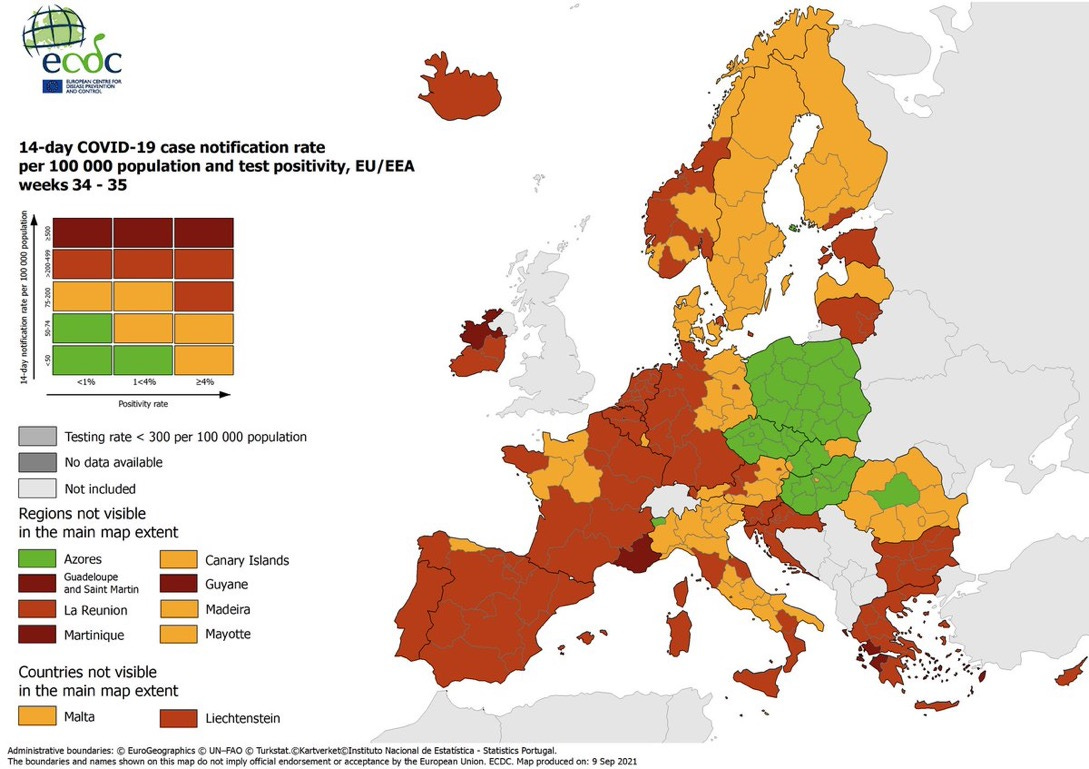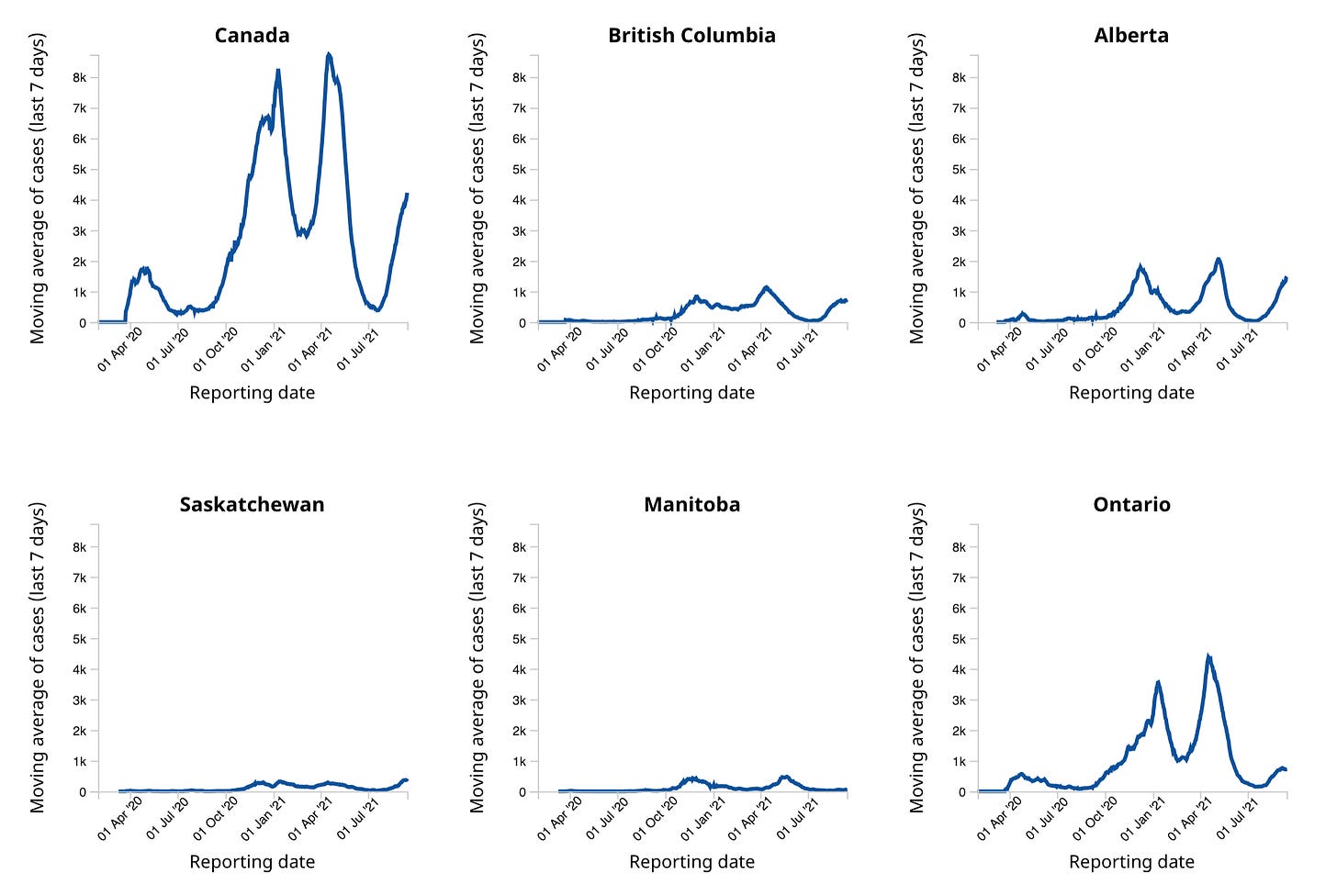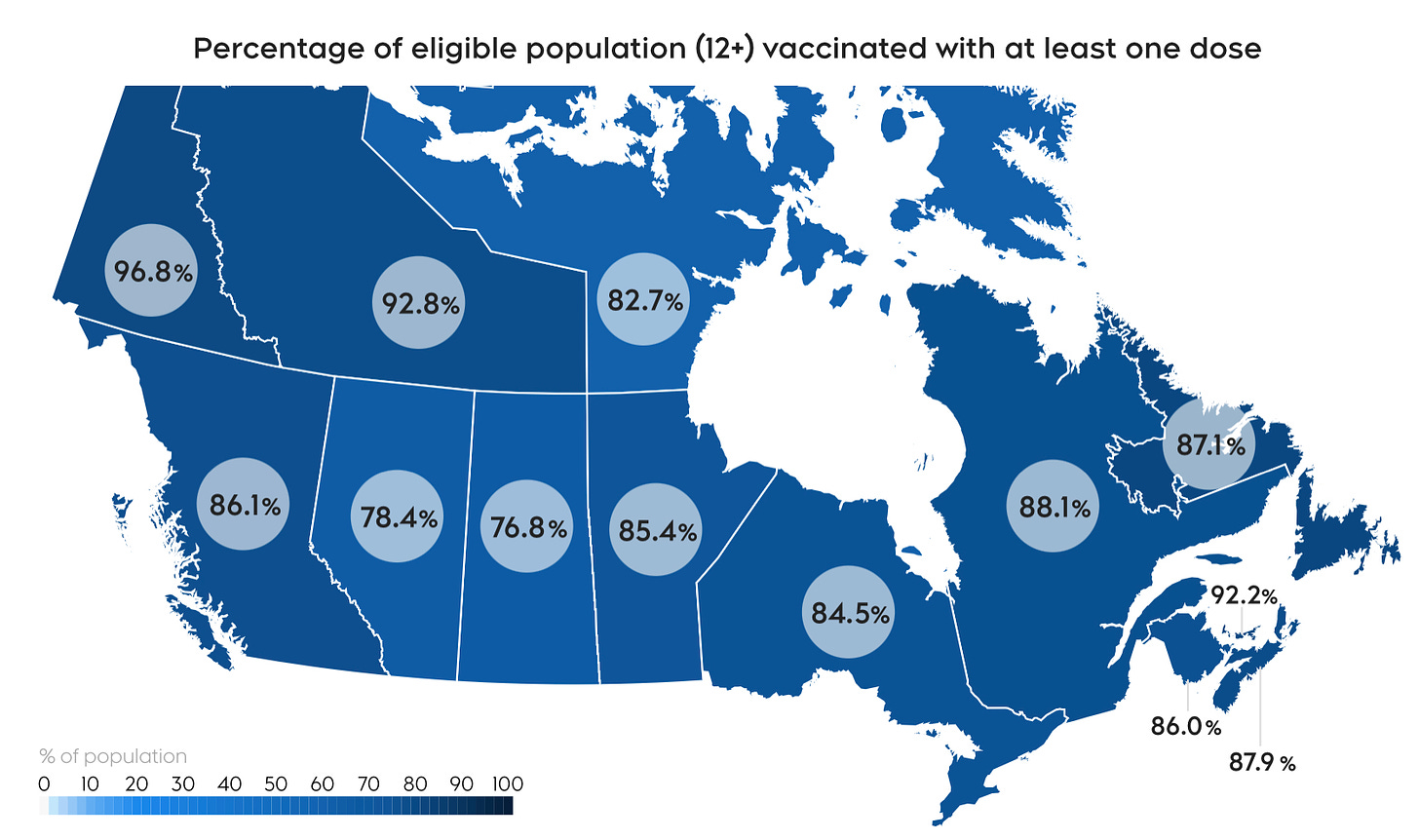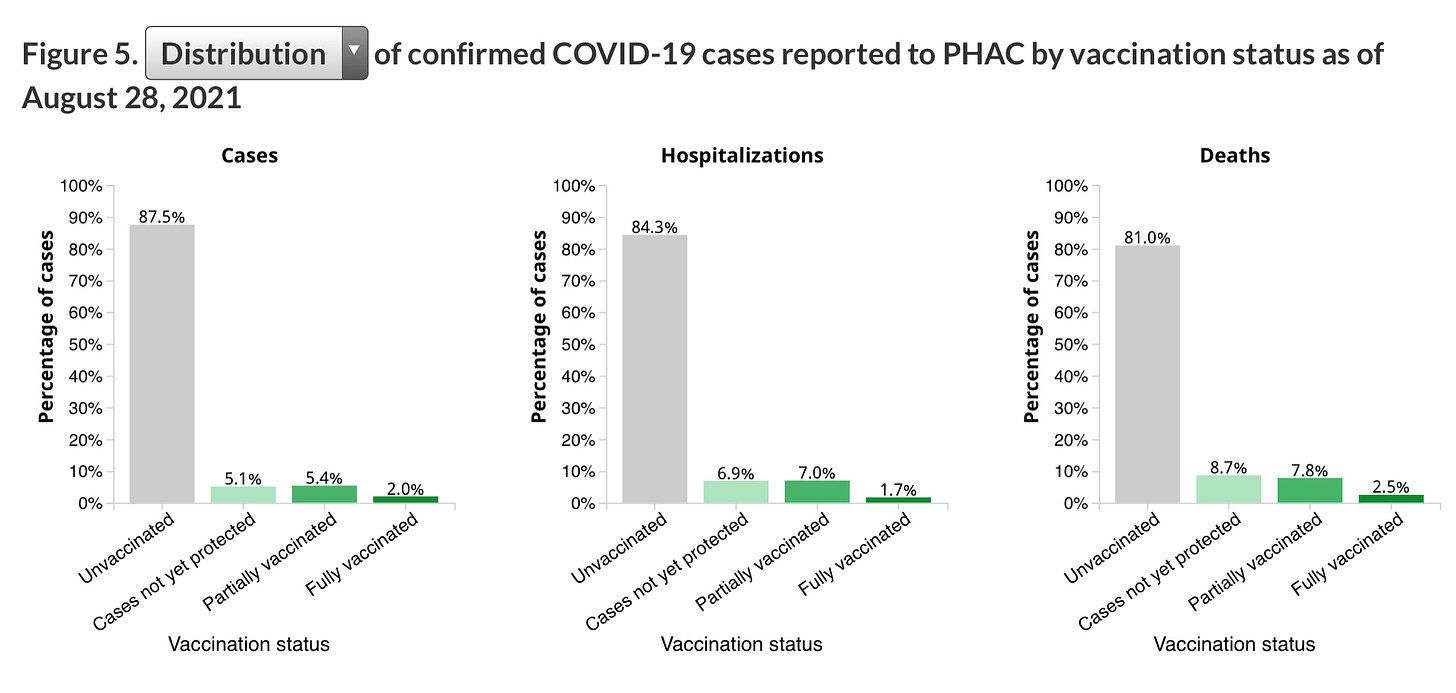The Evening Report - Sept 15
Denmark pulling out all the stops to try and get to the last vaccine holdouts
🇩🇰
An expert group tasked by the Danish government to make recommendations about a long-term strategy has tabled its report today. The group says while Denmark has a lot of advantages, it cannot rule out future infection waves or dismiss the possibility of returning to lockdowns and restrictions.
Specifically, the group concluded that with a major vaccine supply, Denmark would likely weather any future COVID storm from within. However, new variants and developments globally could threaten Denmark from abroad and drive the infection situation out of control.
The group recommends a contingency strategy be put in place laying out plans to combat infection threats from within and without. The plan would have to be able to escalate very quickly should the epidemic situation become worrying. It also cautions that any pandemic response must balance epidemic control, the economy, public health, and personal freedoms.
You can find the full report in Danish HERE
-
The Delta variant continues to reign supreme in Denmark. For a sixth straight week, the variant was so dominant that no other variant of concern was detected. Since last Wednesday’s weekly variant update from the Staten Serum Institut, another 801 Delta variant infections have been confirmed. That pushes the number of total Delta cases to date in Denmark to 47,002.
-
On the vaccination front, the number of 1st vaccine doses administered covers 75.7% of the total population in Denmark, while 73.6% of people in the country have had both doses.
Yesterday there were 6,956 total inoculations, of which 1,601 were 1st doses. This does not include booster shots yet. The Staten Serum Institut will incorporate that data into the dashboard by next week.
-
The Danish National Health Board says it is working flat out to get the last few holdouts vaccinated. In order to reach the goal of having 90% of those 12 years old and older vaccinated by October 1 the health board says it is hitting turbo on a number of initiatives.
The health board says they are focused on two groups where vaccination rates “have stagnated.” They are young people aged 20 to 34. As well as residential areas with high density and a large population of people with ethnic minority backgrounds. For both groups, it says the biggest hurdle is addressing vaccine misinformation and their concerns about vaccine side effects. To that end, they are looking to collaborate with health ambassadors. These would be people that each group could trust and who could then help inform them about the benefits of vaccinations and dispel any misunderstandings.
Unit Head Niels Sandø:
"We are fighting and clawing and we believe that we can succeed. We have a number of initiatives underway, both when it comes to establishing the possibility of being vaccinated as locally and as close to the citizen as possible, and when it comes to being informed about how important it is to be vaccinated. This applies to information for young people, for previously infected people, and for citizens who may still be a little in doubt about whether they want to be vaccinated.”
The health board is working with the regions and municipalities re are areas with lagging vaccination rates.
"It is going a little slow now and it is no secret that it can be difficult to reach the goal of the 90%. But there are still many initiatives underway, and we are working hard to get to the last few hold outs. The municipalities are making an impressive effort to mobilize housing associations and local and voluntary organizations with insight into and influence on laggard groups in the housing areas where the vaccination is low and to make it quick and easy to be vaccinated.”
The Sundhedsstyrelsen says they continue to double down on vaccine information campaigns on social media. As well as targeting pop-up vaccination sites in areas where young people gather. Most recently, it has collaborated with various organizers of sports and cultural events, with more initiatives to come.
-
The number of new infections continues to fall in Denmark, with 370 reported today along with three more coronavirus deaths.
Yesterday there were 83,239 total corona tests done, 42,869 PCR and 40,370 rapid, for a (PCR only) positivity percentage of 0.86%.
-
COVID hospitalizations (116) inched downward (-1) while the number of infected people in an ICU (28) and of those on a ventilator (18) also declined (-2 each).
Region Hovedstaden (Metro Copenhagen) continues to see the bulk of ICU admissions.
-
Add bacterial meningitis to the list of ripple impacts from the global COVID pandemic. Like many other infections, seasonal bugs, and even most sexually transmitted diseases, Denmark’s Staten Serum Institut has found the number of bacterial meningitis cases also plummeted in 2019 and 2020.
The SSI found that in 2019 there were 106 meningitis cases, the lowest number since the turn of the millennium. In 2020, the number of cases fell even further to just 72.
Department Head Palle Valentiner-Branth:
“The decline in 2020 must be seen in the context of the extensive and long-term lockdowns due to the COVID epidemic. The many restrictions led to an overall decrease in a number of respiratory and foodborne infectious diseases. Including bacterial meningitis.”
Meningitis infections account for a total of 28 deaths in the last two years.
🇸🇪
Sweden has added 1,097 infections and 11 more corona deaths since yesterday’s update.
To date, 7,037,966 1st vaccine doses (82.4% of the population 16 years old and older) and 6,221,380 2nd doses (72.8%) have been administered.
-
The Swedish Public Health Agency is urging employers who operate senior care homes to ensure their staff are fully vaccinated. The agency says people over the age of 70 and other older vulnerable populations are at high risk for COVID. It says they require the best possible care an the assurance they are being protected as much as possible from the coronavirus.
Director General Johan Carlson notes that the Infection Control Act mandates healthcare and senior home staff have the responsibility to prevent the spread of infectious diseases and take every measure to protect others.
“Based on this, caregivers need to work to ensure that people over the age of 70 and risk groups meet vaccinated staff. Health and medical staff thus have a great responsibility of their own to contribute to maintaining high patient safety
Carlson says care homes must make sure that seniors at risk not only see fully vaccinated staff but that everyone around them must also have both doses.
🇳🇴
Norway has added 1,160 infections and 12 virus deaths since yesterday’s update.
COVID hospitalizations (104) edged down (-1) while the number of people in an ICU (35) also dipped (-2) and of those ventilator numbers (19) are unchanged.
So far, 74.09% of Norwegians have had one vaccine dose and 64.66% have had both doses.
-
Infections down and hospitalizations up. The Norwegian Institute of Public Health has zeroed in on hospital admissions and the directly related number of unvaccinated people in its latest weekly assessment. Hospitalizations rose last week, with 81 more people being admitted, an increase from 59 the week before. The NIPH notes hospital statistics last week are incomplete due to a data issue, so they may be even higher.
Of the infected people who were hospitalized last week, the health agency says 62% were unvaccinated; 9% had just one dose, and 29% were fully vaccinated.
COVID fatalities are also up. After an average of seven deaths in each week of the previous four months, last week saw 13 coronavirus deaths. The average age of the people who died was 87.
After seeing record high daily infection numbers, the infection pressure seems to be easing. The NIPH says infections were down 16% last week compared to the week prior. The majority of new infections are among young people aged six to 19 years old. With most of the infection activity focused in Oslo.
The Delta variant remains totally dominant in Norway, again making up 100% of all infection cases last week with “little infections from other variants.”
While Norway is seeing rising hospital admissions and more cases among those who are fully vaccinated, the national health agency says compared to previous infection waves hospitalizations and deaths are much lower.
“This is probably because vaccination protects very well against serious illness, but not quite as well against infection. Elderly and other risk groups have very high vaccination coverage. Now that fewer people are infected, we can expect a decrease in the number of new admissions in one to two weeks. We consider it unlikely that hospital’s capacity will be threatened.
The agency urges a full court press on getting the last few people in Norway vaccinated, especially the latest group to be vaccinated, those 12 to 17 years old.
🇫🇮
Finland has registered 522 infections since yesterday’s update. On Wednesdays, it provides a broader update. In the last week there have been 12 more corona deaths.
In the last seven days, COVID hospitalizations (95) have dipped slightly (-3) and the number of people in an ICU (29) has increased (+7).
To date, 4,085,588 1st dose vaccinations (73% of the population) have been administered, while 3,180,206 people (57%) have had both doses.
-
The Finnish Institute for Health has updated travel guidelines and is now recommending everyone be fully vaccinated before traveling abroad. It says having both doses gives the best possible protection against infection, serious cases of COVID, hospitalization, and death. The recommendation applies to everyone in Finland who is eligible to be vaccinated.
🇪🇺🦠💉
In today’s State of the Union address, European Union President Ursula von der Leyen updated the current COVID situation across Europe and unveiled new initiatives to battle today’s global pandemic and try to prevent any future ones.
In the speech she said that while 70% of all adults in the EU are vaccinated, she sees “worrisome divergences” in vaccination uptake in various parts of Europe. Von der Leyen urged member states to keep up the vaccination momentum. The EU has delivered 700-million doses so far and has 1.8 billion additional doses secured, which, according to today’s speech, is enough to finish getting everyone two doses and possibly a booster shot if need be.
However, von der Leyen said by far the biggest concern right now is vaccination inequity outside of Europe.
“Our first, and most urgent, priority is to speed up global vaccination. With less than 1% of global doses administered in low-income countries, the scale of injustice and the level of urgency are obvious. This is one of the great geopolitical issues of our time.”
To that end, the European Union will earmark €1-billion to increase production of mRNA COVID vaccines in Africa. On top of 250 million vaccine doses already donated to developing countries the European Union will donate another 200 million doses by mid-2022.
On top of current efforts to fight the pandemic within as well as outside the EU, one of the other major planks of the speech was about protecting against future pandemics. The EU was roundly criticized for a sluggish start to its much touted vaccination campaign. Now the European Union will invest €50 billion by 2027 in a new Europe-wide health preparedness and resilience mission. A new biomedical agency called the European Health Emergency Preparedness and Response Authority (HERA) will focus on pandemic preparedness and vaccine development.
“This will be a huge asset in dealing with future health threats earlier and better. We have the innovation and scientific capacity, the private sector knowledge; we have competent national authorities. And now we need to bring all of that together, including massive funding. To make sure that no virus will ever turn a local epidemic into a global pandemic.”
Von der Leyen also said that Europe’s vaccine passport, the EU digital certificate, is being used by 400 million people across 42 countries and four continents.
🇪🇺
The European Centre for Disease Prevention and Control has updated its COVID risk assessment for each country within the European Union.
🇨🇦
Canada reported 4,048 COVID infections and another 26 lives lost to the coronavirus yesterday. Nationally, the infection curve continues to climb, being pushed up largely by Alberta and to a lesser degree by Quebec.
So far, the Canadian vaccination effort has administered 28,393,009 1st vaccine doses (74.58% of the total population) while 26,124,394 people (68.62%) are fully vaccinated.
Canada continues to see a 4th wave driven by the Delta variant that is like a heat seeking missile for people who are unvaccinated.
In Ontario today there were 593 infections, of which 477 were people who were unvaccinated or who had just one vaccine dose. 346 people are in hospital and 311 of them are unvaccinated or partially vaccinated. Of the additional 188 people in an ICU, that number is 178.
Quebec reported 785 new infections and one more corona death today.
In Atlantic Canada, New Brunswick had 63 infections, its highest yet, as its outbreak worsens. Nova Scotia has six. Newfoundland and Labrador had 10 as it held off on easing restrictions after vaccination targets were not met.
Manitoba saw 49 infections and two more deaths.
There were 506 infections in Saskatchewan yesterday, of which almost 20% were children under the age of 12.
Alberta logged 1,434 new infections, by far the most of any province, while seeing another nine virus deaths. With 11,900 corona tests, that equals a positivity percentage of a scary 12.09%. Hospitalizations continue to rise with 610 people hospitalized, of which 73.5% are either unvaccinated or partially vaccinated. An additional 212 are in an ICU and there the number rises to 91%.
B.C. registered 677 new corona cases and one more death. There are 288 people in hospital and of those 140 are in an ICU.




